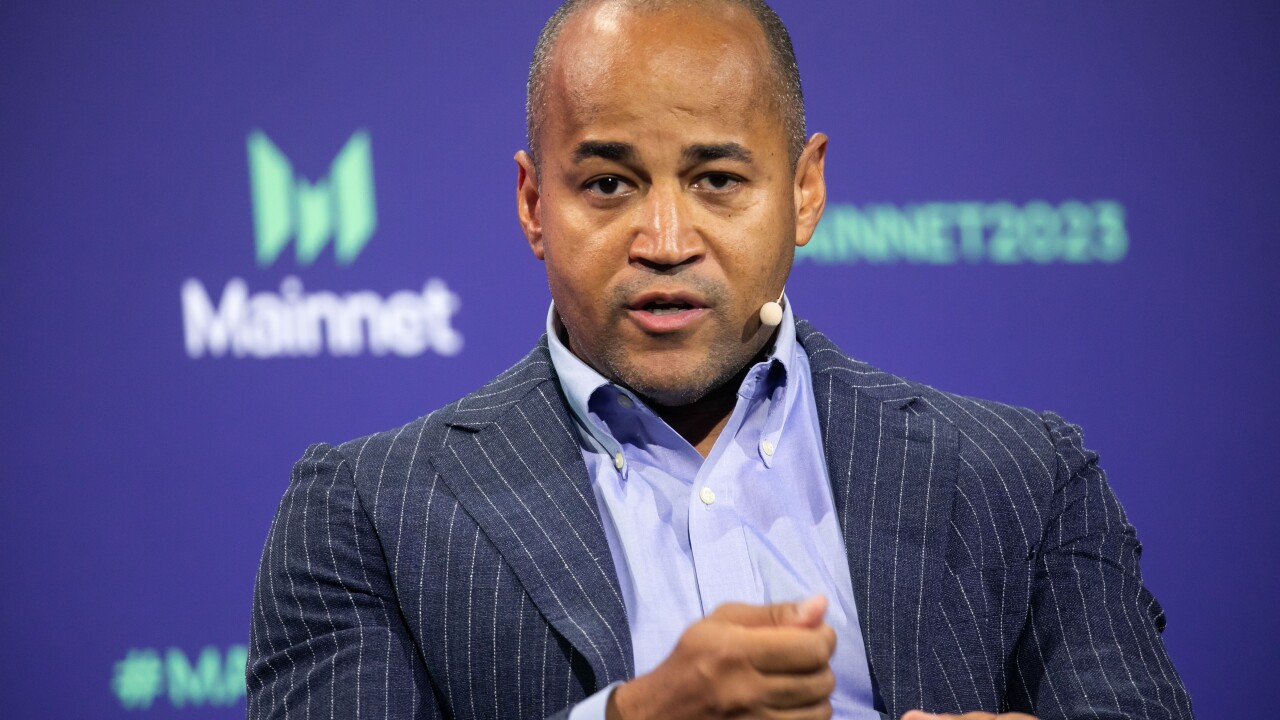The Federal Reserve said it will begin buying $60 billion of Treasury bills per month to improve its control over the benchmark interest rate it uses to guide monetary policy after turmoil rocked money markets in September.
The central bank, in a statement Friday, stressed that "these actions are purely technical measures to support the effective implementation" of interest-rate policy and "do not represent a change" in its monetary stance. "In particular, purchases of Treasury bills likely will have little if any impact on the level of longer-term interest rates and broader financial conditions."
In foreshadowing the Fed's decision earlier this week, Chairman Jerome Powell repeatedly insisted that any planned securities purchases would not be a resumption of quantitative easing — the crisis-era stimulus programs that the central bank used to lower long-term borrowing costs and boost the economy.

The New York Fed's open markets desk will "purchase Treasury bills at an initial pace of approximately $60 billion per month, starting with the period from mid-October to mid-November," according to a central bank statement. The Fed said purchases of Treasury bills will extend "at least into the second quarter of next year," leaving open the possibility of a change in the pace and duration of purchases.
A recent and unexpected scarcity of lenders in overnight funding markets caused yields to spike sharply in mid-September, briefly pushing the Fed's benchmark rate outside its target range. Since then, the Fed has been injecting liquidity into overnight markets on an ad hoc basis. The central bank said Friday that these would continue at least through January.
The Fed said the aim of the bill purchases would be to maintain bank reserves in the system "at or above the level that prevailed in early September 2019."
'Certainly help'
"I don't know if this is going to be enough, but this will certainly help," said Joseph LaVorgna, chief economist for the Americas at Natixis. "It will paper over some of the remaining technical issues that still need to be fixed."
The central bank said Friday that policy makers held a videoconference on Oct. 4 to discuss the moves.
The Federal Open Market Committee is next scheduled to meet on Oct. 29-30 to discuss monetary policy amid expectations it could cut interest rates for the third time this year to further protect the economy from global weakness and trade uncertainty.
"From a monetary policy standpoint, I'd say that at the margin it means they can focus on whether to cut or not cut at the next meeting, and not be bothered with the discussion about the plumbing," said Thomas Costerg, senior economist at Pictet Wealth Management.
By purchasing securities, the Fed will add a cushion to the supply of excess bank reserves, a pool of money that helps provide liquidity to the overnight market.
Overnight money markets — where banks, investment funds, companies and other institutions borrow and lend cash — help set the baseline costs for longer-term lending. The Fed seeks to control overnight rates as a tool for influencing the broader economy.
The Fed said it will also continue to inject liquidity into the markets through overnight and term repurchase agreements. Term repo operations "will generally be conducted twice per week, initially in an offering amount of at least $35 billion per operation," the Fed said. "Overnight repo operations will be conducted daily, initially in an offering amount of at least $75 billion per operation."
Until recently, the Fed was reducing the size of its balance sheet, unwinding some of the crises-era bond purchases in a process that lowered the supply of excess reserves. Fed officials had readily admitted they didn't know how far that process could go before it might cause a shortage of reserves and disrupt money markets, but they anticipated that threshold would be lower than they now believe.
"It very much looked like we were still a bit perhaps above that" threshold, Powell said in Denver. "Until September, when we found we probably weren't."
For the week through Sept. 4, bank reserves deposited at the Fed totaled $1.49 trillion, according to data from the central bank. That fell to $1.39 trillion on Sept. 18 before bouncing back to $1.51 trillion in data reported Oct. 10.





